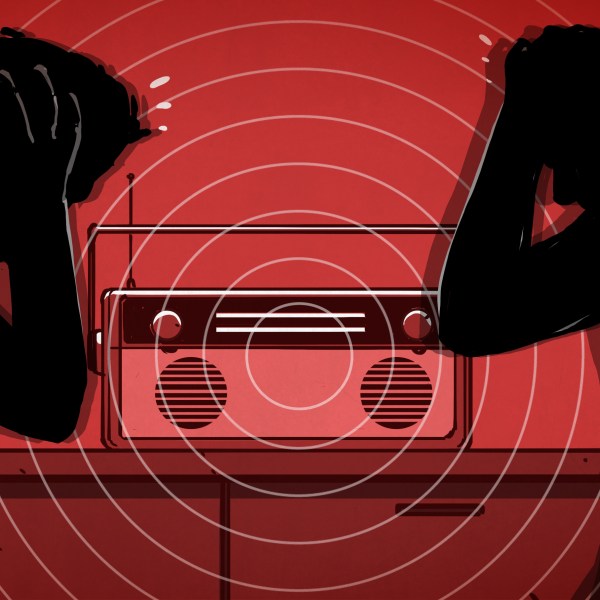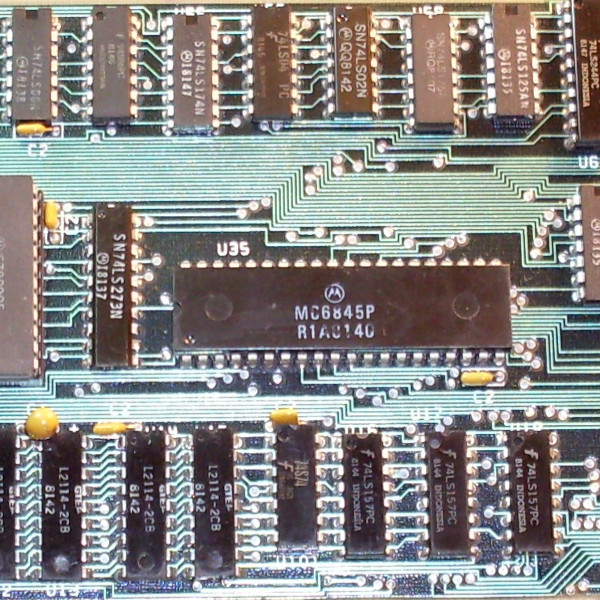Hearing aids are expensive little devices, typically costing a few thousand dollars each. They need to be highly integrated to fit in the ear, while still providing signal processing to ensure good audio quality.
This DIY hearing aid does some intelligent signal processing. It uses an electret to capture audio, then uses a pre-amplifier to increase the gain 100 times. The next stage consists of four filters, dividing the input signal by frequency into four parts. These are passed into four LTC6910 programmable gain amplifiers, which allow an Arduino to control the gain of each channel. The LTC6910 takes 3 digital inputs that are used to set the gain value.
To determine which gain to use for each frequency band, the Arduino needs to know how much power is in each band. This could be done using a Fast Fourier Transform, but that would require quite a bit of processing power. Instead, an envelope detector averages the signal, which can be read by an analog input on the Arduino. Using this information, the hearing aid can boost specific frequencies when it detects conversation.
This hearing aid won’t quite fit in your ear, but there is a lot of interesting signal processing going on. The schematic, Arduino source code, and a MATLAB simulation are provided.

















This is onather one of those projects that could have done without the ‘duino because a envelop detector can be made of just a diode , cap and resistor. I’m just gonna assume this is what the creator had at hand. I really sincerely hope that is the reason.
You mean like the envelope detector made from a diode, cap, and resistor that this project actually uses? Do you realize how much more this device does that simply extract envelope information?
Did you even read the article?
nope just read the descriptions
Reading further , the arduino doesn’t do that much , It plays a tune , and amplifies midtones if they are over a threshold. Oh wait it has push buttons. and the gain is only adjustable by factors of two ! Still not really seeing the need of an big and clunky duino other that that it was on hand already ,which is an acceptable reason for me.What this project would ideally need is a DSP chip
An arduino is just an atmega chip with a bootloader, a few caps and a crystal. Get over i already.
and its on a large board dev board which makes this thing bulky. Yeah the rest of the project takes up way more space , but that is refine-able. I’m not against the arduino , its just that there sometimes are better solutions to a problem.
It’s on a large board because it’s easier. He could pluck the chip from the board and it would still be an arduino :)
Its impressive, don’t forget “Arduino” is just a basic AVR with a carrier PCB.
You could probably port this to a PIC 10F222 or something similar, any old microcontroller would work and with some very simple PWM circuitry could be made into something that would fit into the gutted casing of a Bluetooth headset.
In fact, one suggestion is to incorporate loop antenna RX and a few other goodies such as wireless charging + FM radio etc.
Wouldn’t it be possible to use a bluetooth headset as a wearable microphone/earbud and do the required signal processing on a smartphone?
Its a good idea , but i don’t think it will work very well. The main problem that is see is digitally filtering each band in time. This presents quite the load for a normal processor. If it takes too much time then we would be able to hear a time difference between real life and the processed sound making it even more difficult to hear.
A Bluetooth headset almost certainly has too much latency involved in digitizing the voice, transmitting it to the phone, and having the phone transmit it back, plus at least for a telephony-style headset, which downsamples to phone limitations, there’s going to be way too much loss of audio quality in the process. But most people who wear hearing aids tend to wear two of them, and keeping two Bluetooth systems in sync is far less likely to work. (I testdrove a pair of conventional hearing aids once; even the $7000/pair ones didn’t stay in sync well enough to avoid having echoes inside my head, and it was really distracting.)
But a wired headset connected to your smartphone? Should work fine, and the only reason you can’t easily try it yourself is that most two-ear headsets don’t have two microphones, so you’ll either have to do mono instead of stereo or else play around building headsets. Plenty of horsepower in a modern smartphone to do the digital signal processing, so you’d be able to do a hearing aid for a fraction of the cost of the commercial ones, in return for going wired.
(Note to the Free Patent type of folks out there – this isn’t Prior Art, because I haven’t built one yet, but it sure passes the Obvious to Someone Skilled In the Field test for non-patentability. And we’ve had DSPs around for more than 20 years.)
I work at a hearing aid company and there’s so much more to hearing aids than amplifying an entire spectrum of sound. I’m glad to see the project owner took some of this into account. Most of these projects do not qualify as hearing aids, but as hearing amplifiers.
Many forget that loss of hearing is not just “you hear things a bit more quiet”. Some hearing loss directly affects specific frequencies. You may still hear people speak without any problems, but can’t hear birds chirping. Sound may also come out distorted because of spectrum loss.
Another thing is speech recognition and noise cancelling. There’s a difference between amplifying sound and amplifying the sound you want to hear.
It also seems that this item is monaural. Be careful when and if, moving up to binaural. The microphones will clash with the speaker and you -will- have feedback. That’s the annoying high pitched whining people often complain about.
Good job, carry on! :)
“It also seems that this item is monaural. Be careful when and if, moving up to binaural. The microphones will clash with the speaker and you -will- have feedback. That’s the annoying high pitched whining people often complain about.”
Feedback has nothing to do with monaural versus binaural… in fact the reverse – it requires a feedback loop between a microphone and speaker connected to the same amplifier, and in a binaural setup the two channels are independent.
(I am profoundly deaf and have used hearing aids for several decades).
Nice project – have often thought of doing something along the same lines myself, but conscious I could never package it satisfactorily for daily use.
Doh i was totally sleeping when i wrote that. What i wanted to write is when it’s compacted the microphone will move closer to the speaker -.- sorry!